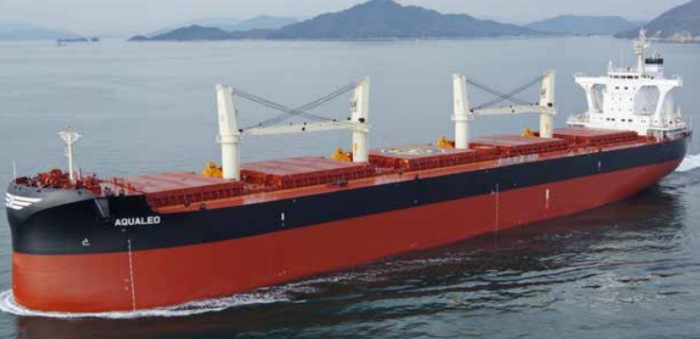The Union of Greek Shipowners (UGS) released its annual report for 2017-2018. In the report, UGS notes that Greece remains in the leading position during 2018, as it controls 20% of the global fleet in dwt tonnage.
Namely, Greece owns a 30% share of tankers and 22% of bulk carriers. These numbers indicate that Greece accounts for almost 50% of the EU’s fleet capacity in dwt terms, Theodore E. Veniamis, president of the Union of Greek Ship owners mentioned.
[smlsubform prepend=”GET THE SAFETY4SEA IN YOUR INBOX!” showname=false emailtxt=”” emailholder=”Enter your email address” showsubmit=true submittxt=”Submit” jsthanks=false thankyou=”Thank you for subscribing to our mailing list”]
Greece has a total of 4,746 vessels, for ships that exceed the 1,000 gt, of 365.45 million deadweight tons. This is an increase of 6.6% from 2016.
Moreover, the average age of the ships that are carrying the Greek flag is 13.7 years, while for Greek owned ships their average age is at 11.5 years. In comparison, the global fleet average is 14.6 years, the report outlines.
What is more, the report states that:
20% of global seaborne trade is carried in vessels controlled by Greeks who account for 0.15% of the world’s population. The Greek-owned fleet provides an indispensable service to our country, Europe and the world at large and constitutes a major achievement.
This is highlighted by the fact that, Greek shipping produced a total of 9.14 billion euros in foreign exchange inflows last year, according to the report, which represents an increase of 16.91% from 2016.
Furthermore, Greece remains on the IMO “List of confirmed Standards of Training, Certification and Watchkeeping for Seafarers (STCW) Parties” and on the White Lists of the Paris and Tokyo Memorandum of Understanding, while it is one of the safest fleets worldwide with 0.65% of the fleet (based on number of ships) or 0.19% of the fleet (based on tonnage) involved in accidents.
The report concludes by saying that:
The Greek fleet is highly responsive to shifts in trade patterns or the reorientation of trade flows and contributes to the building of new trading partnerships between suppliers and importers in a cost-effective way.
See more details in the PDF below






























































